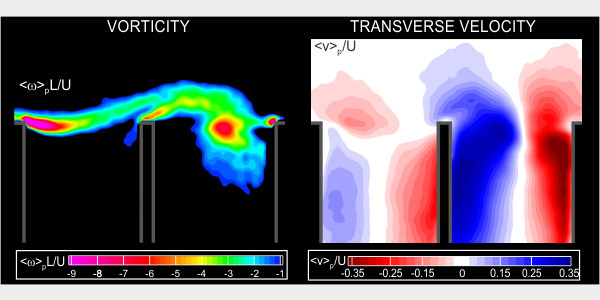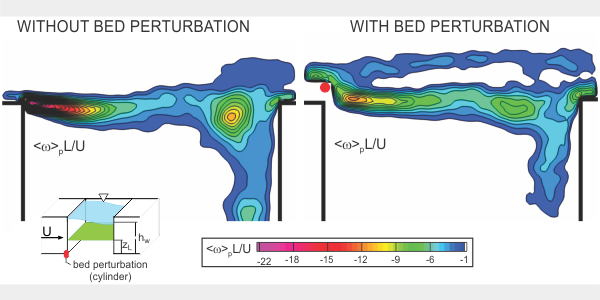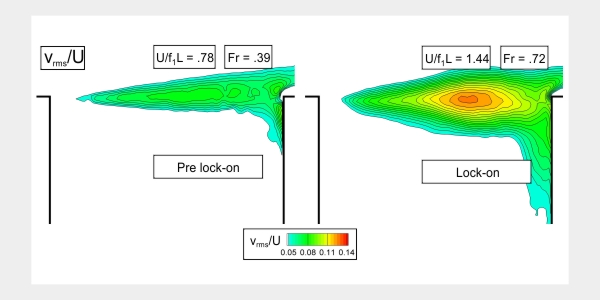Shallow flow past successive cavities is characterized via a technique of high-image-density particle image velocimetry. Highly coherent, self-sustained oscillations arise due to coupling between: the inherent instability of the separated shear layer along the opening of each sequential cavity; and a gravity standing wave mode within each cavity. The globally coupled nature of the flow structure is evident in dominance of the same spectral component in the undulating vorticity layers along each of the successive cavities and the wall pressure fluctuations within the cavities. Unlike coupled phenomena associated with flow past single cavities, optimal coupling for successive cavities requires a defined phase shift between the standing wave patterns in adjacent cavities and, furthermore, an overall phase shift of the undulating shear layer along the cavity openings. The magnitudes of these phase shifts depend on the mode of the gravity standing wave in each cavity, i.e., longitudinal or transverse mode, which are respectively aligned with and normal to the main stream. Such phase shifts result in corresponding displacements of patterns of phase-referenced vorticity concentrations along the cavity openings and change in timing of impingement of these concentrations upon the downstream corners of successive cavities. All of the foregoing aspects are related to the unsteady recirculation flow within the cavity, the time-dependent streamline topology, and concentrations of Reynolds stress along the cavity opening.
Principal Investigator: B. A. Tuna




